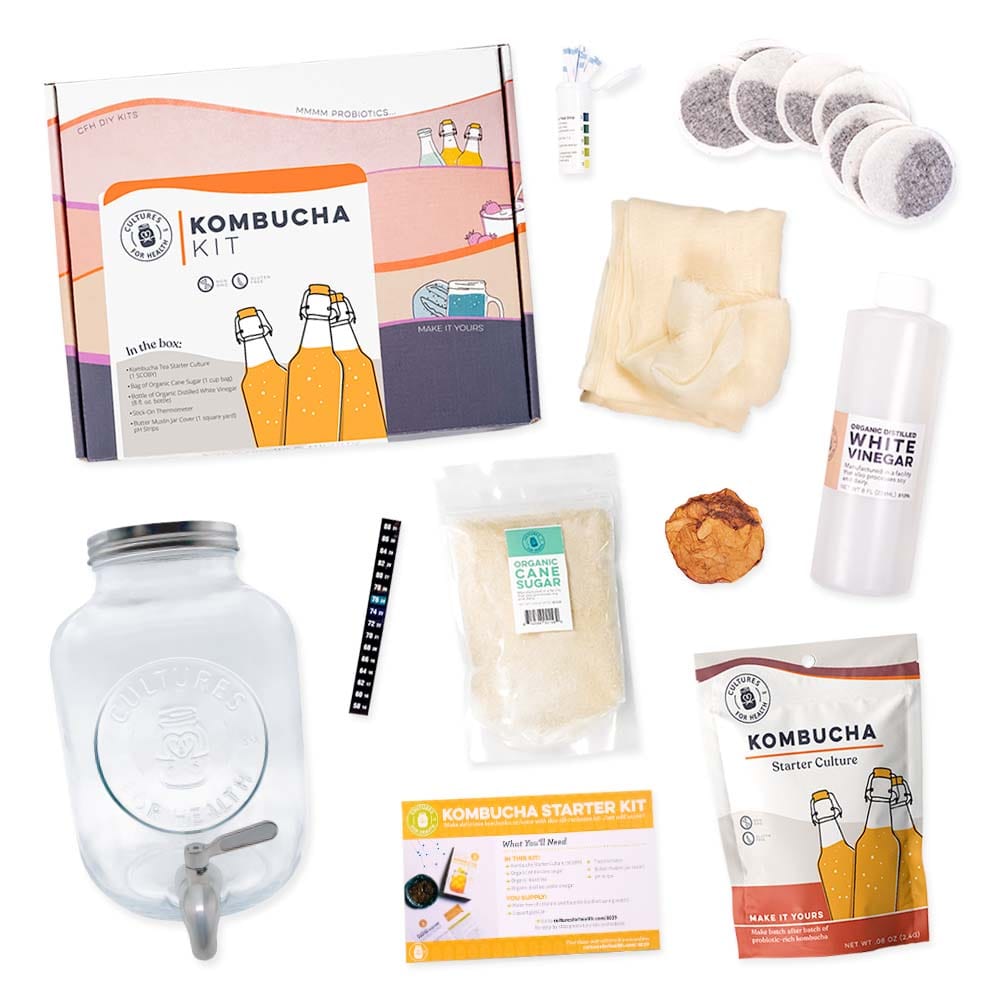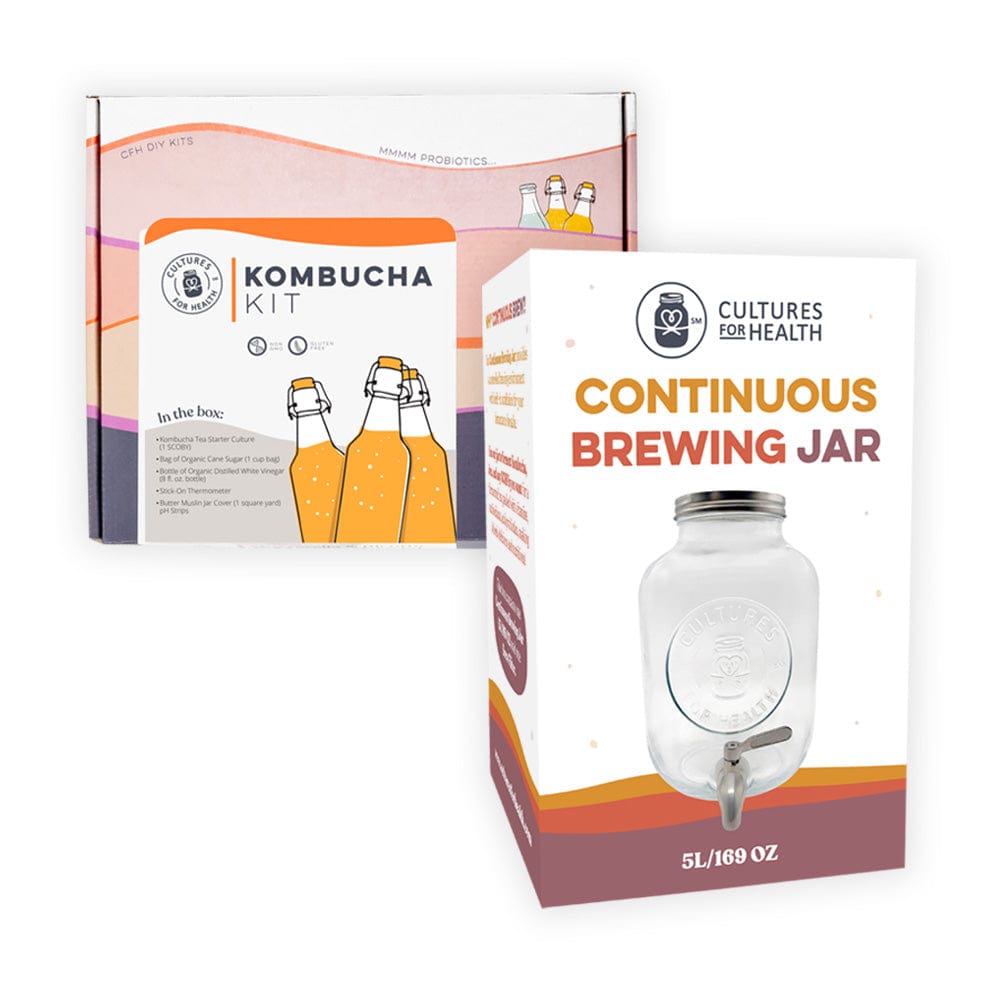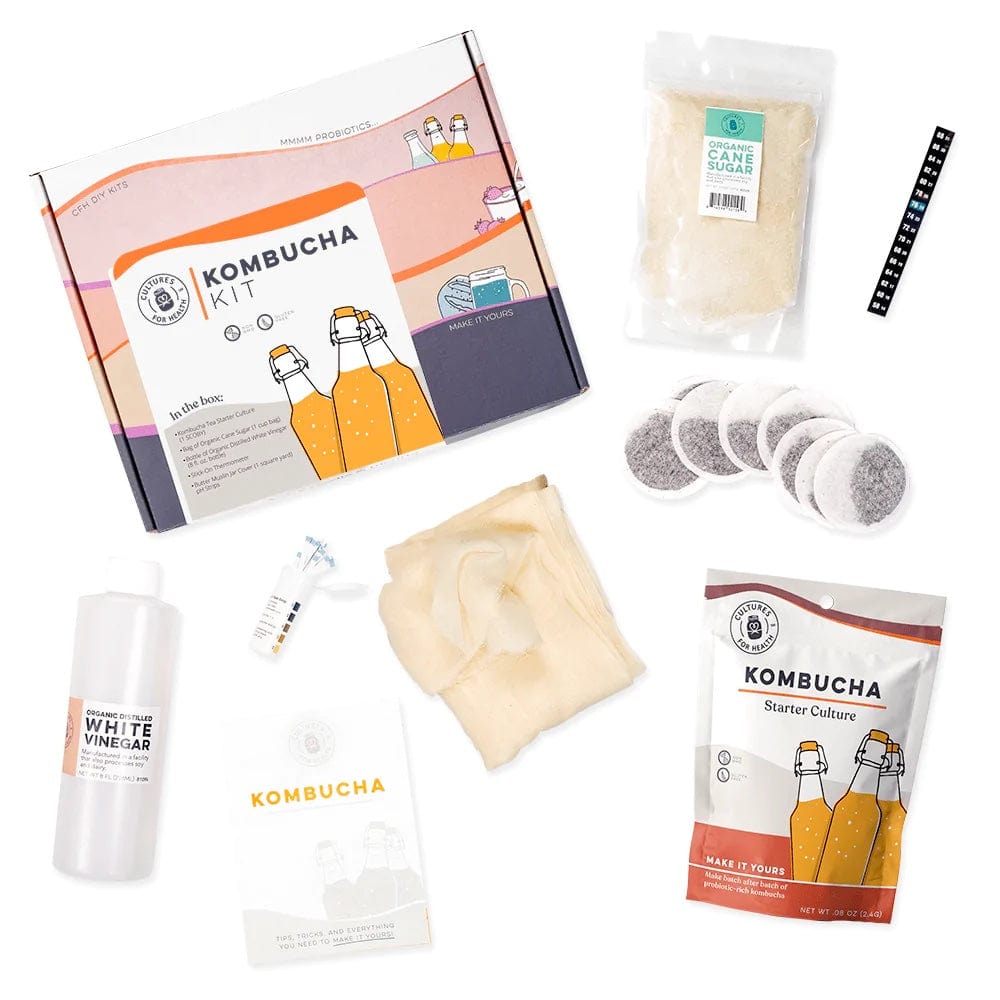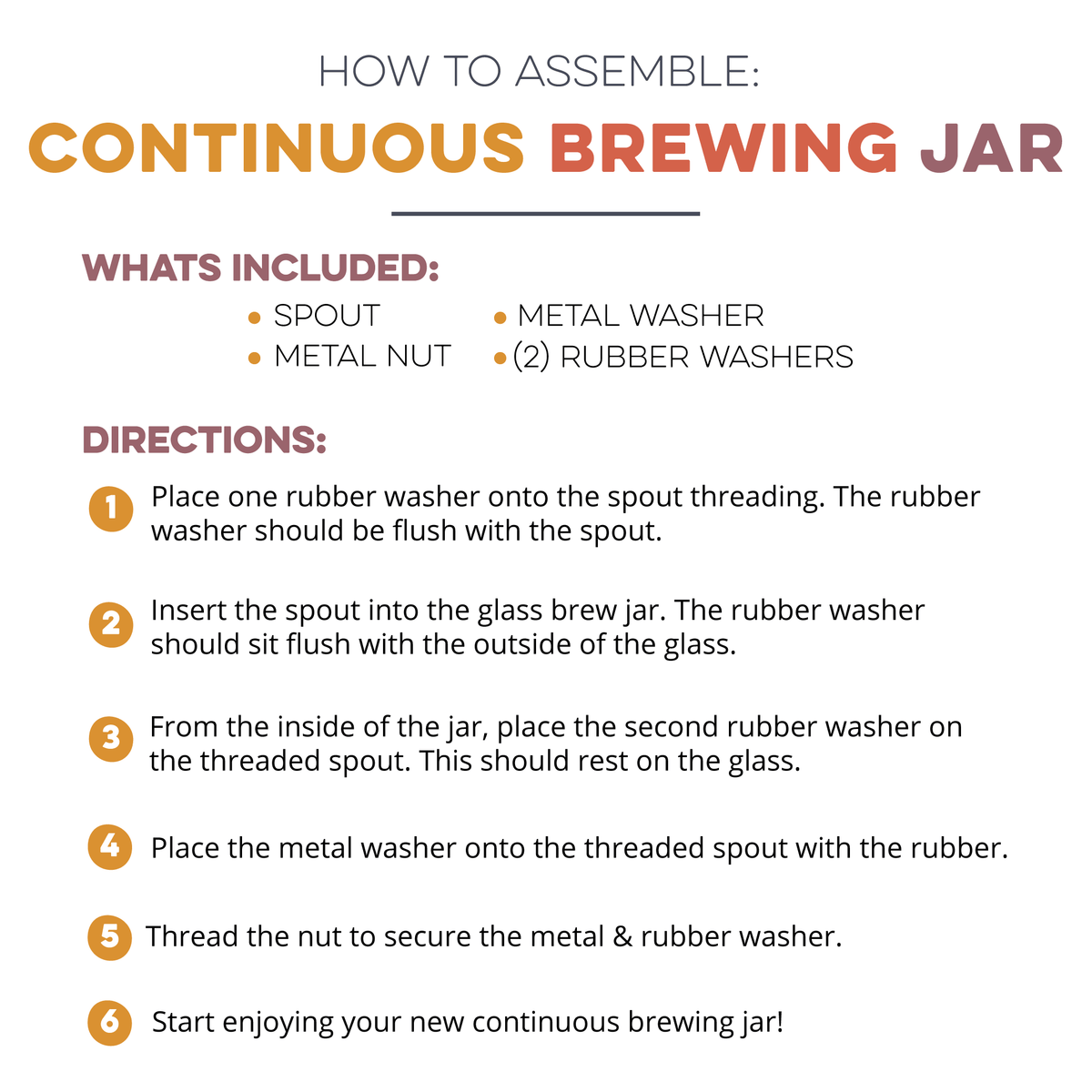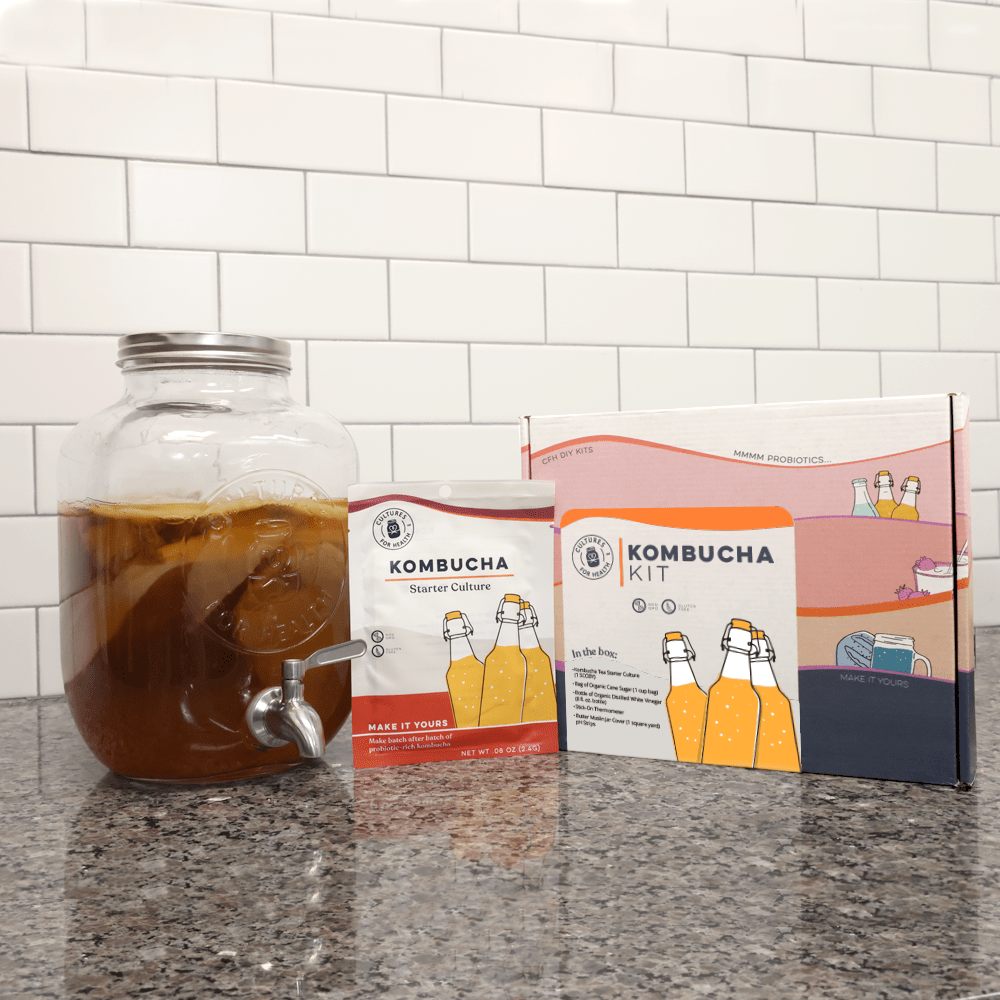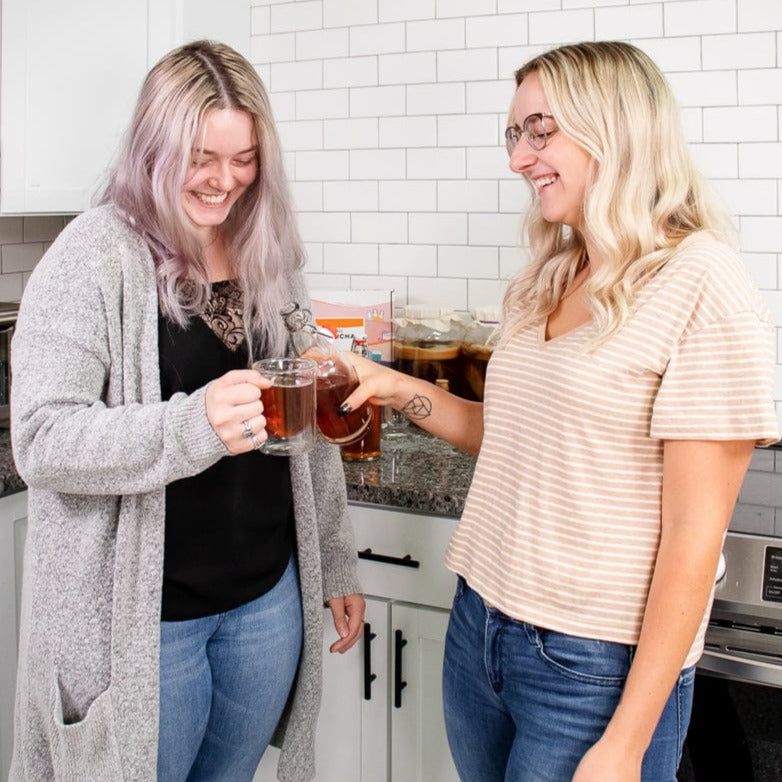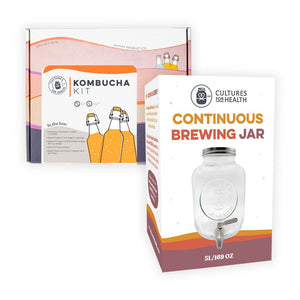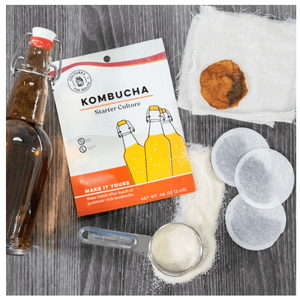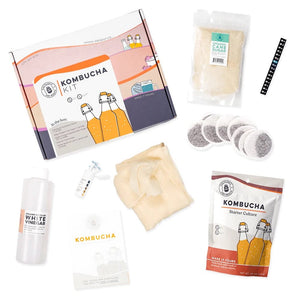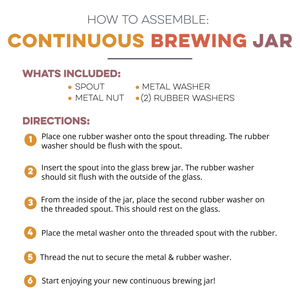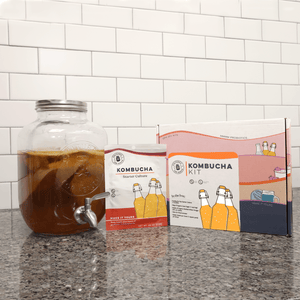
Making smaller, quart-sized batches is a good way to keep your SCOBY healthy when first starting to make kombucha at home.
One quart of kombucha every 7 to 30 days may not seem like enough to feed a growing family or satisfy your kombucha cravings. So what happens once you have a strong, healthy SCOBY, and you want to have more kombucha, more often? For those seeking the healthiest kombucha options and a larger supply, there are strategies and techniques available to scale up your kombucha production while maintaining the quality and benefits of this beloved fermented beverage.
You set up a kombucha continuous-brew system of course!
In this tutorial we'll outline how to brew kombucha continuously and special considerations to keep in mind with this approach.
We want to help you learn about all the benefits of kombucha and click to download our Kombucha Guide with tips and tricks on making it yourself! Plus, we'll give you our favorite recipe for continuous brew kombucha so you can enjoy all the benefits immediately!
Jump to a Section:
WHY SET UP A KOMBUCHA CONTINUOUS-BREW SYSTEM?
Continuous-brew systems are easy to set up and maintain. They have a number of benefits:
1. They are low maintenance.
While live cultures will always require some attention, continuous brew systems require less maintenance then consistently changing brewing containers.
2. They can help protect the SCOBY against mold.
Maintaining the ecosystem created during the fermentation process provides the best defense against the development of mold and invasion by transient yeasts and bacteria.
3. They can help keep your SCOBY healthy.
Continuous brew systems provide the healthiest environment for the SCOBY and allow the yeast and bacteria to develop relatively undisturbed with a consistent supply of new food.
4. Endless Kombucha!
Continuously brewing kombucha means a more consistent supply of kombucha for you and your family.
HOW TO SET UP A CONTINUOUS BREWING SYSTEM
1. Choose and Prep Your Equipment
You will need a brewing vessel and cover for a continuous brew system. We recommend using a glass container with a tight-weave fabric cover. If you're interested in other options, our article Choosing kombucha supplies describe what materials to avoid when selecting a brewing container and what other materials work well for the cover.
A continuous brew container should hold between 1 and 5 gallons. You will also want to container to include a spigot near the bottom. This is necessary for drawing off kombucha without disturbing the contents. Do not use a spigot that has metal on the inside of the container. Continuous brew containers can often be found at a local home brew supply store or you can try Mortier Pilon's Kombucha Brewing Jar. It holds 5 liters and is specifically design for continuous kombucha brewing.
Continuous Brewing Kombucha Kit
Clean everything thoroughly prior to setting up the brew system. Avoid antibacterial soap, and rinse with vinegar to remove soap residue.
2. Prepare the Kombucha Mixture
Prepare the sweet tea mixture according to these ingredient ratios and instructions. Pour the mixture into the continuous-brew container and add the SCOBY. Do not overfill the container. Be sure to allow space for the mother SCOBY and development of the new SCOBY. Once the tea mixture and SCOBY are in the container, cover the container for fermenting.
3. Ferment the Kombucha
Ferment the kombucha for 7-30 days based on your flavor preferences. The longer the kombucha ferments the less sweet and more vinegary it will taste. Keep in mind that the best way to check the progress of your kombucha is to taste it periodically. Click here for more information on kombucha fermentation periods.
4. Harvest the Kombucha
There are two methods for harvesting kombucha:
- Option 1: Once the kombucha has fermented to your liking, use the spigot to drain off the kombucha you wish to consume for the week and bottle it. Leave at least 20% of the kombucha in the vessel to act as starter tea for the next batch.
- Option 2: Drain off the kombucha as you drink it. At the end of a week, add more sweetened tea.
5. Feed the Brewing System
Prepare new sweet tea using the appropriate ratios of water, tea, and sugar for the batch size you are adding to your vessel. Allow the tea to cool thoroughly, then slowly pour the mixture into the top of the container to feed the system.
OTHER CONSIDERATIONS
Timing Harvesting and Feeding
Harvesting and feeding can be done every 7 to 30 days. If you're wondering, "can you drink kombucha every day?" and you choose to draw off kombucha to consume daily while only feeding the mixture once a week, it's important to note that the kombucha drawn off earlier in the week is likely to be sweeter compared to the ones drawn off later in the week.
Controlling the Sugar Content
If low sugar content is an important factor for you, allow the fresh sweet tea an adequate fermentation period prior to the next draw. Remember, a longer brewing time results in less sugar and a more vinegary-flavored kombucha.
Cleaning the Brewing Vessel and Spigot
Cleaning the vessel and spigot is required only if the spigot becomes clogged with yeast particles or if too much yeast builds up in the bottom of the container.
To clean the system, remove the kombucha, SCOBY, and enough starter tea for the next batch; set aside in a safe container. Clean the container using distilled white vinegar and warm water. Once the system is clean, add the kombucha, SCOBY, and starter tea back to the vessel, add fresh sweet tea, and resume the process.
The Large SCOBY
Keep in mind, continuous brewing systems produce large SCOBYs. The primary issue with a large SCOBY is that after some time they grow very thick, taking up valuable space in the container. Reduce the large SCOBY's size periodically, to allow more efficient fermenting. The SCOBY can be torn or cut up using a non-metal utensil. Check out our list of ideas for using extra SCOBYs.
Are you curious about Kombucha and want to learn more? Download our free Kombucha Guide and Recipe today and start brewing your Kombucha at home!














